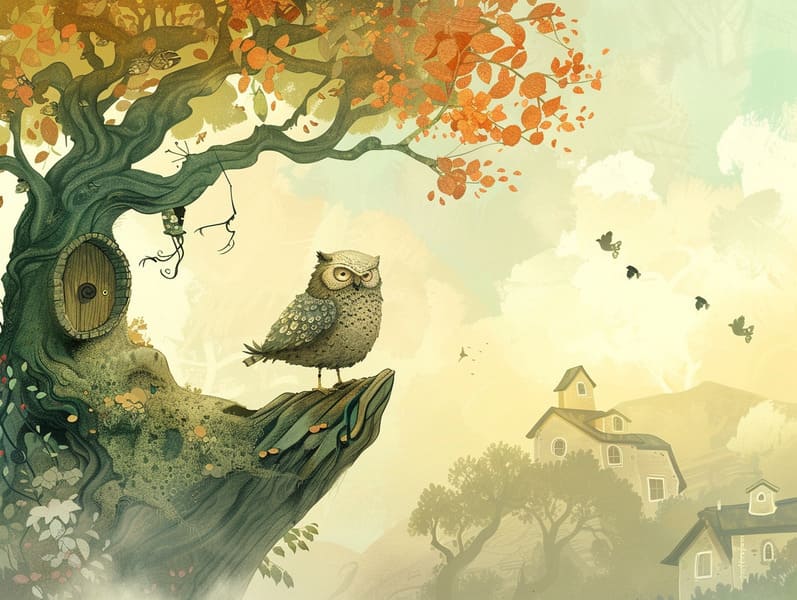
Traditional fairy tales have long histories. These stories have been narrated from one generation to the next centuries before they were ever transcribed. They were born from a variety of societies, including Western traditions. They were initially passed along among adults, often carrying themes and messages reflective of the societal norms and beliefs of the time.
Jacob and Wilhelm Grimm, Jacob and Wilhelm (the Grimm brothers), were among the first to collect and release many of these beloved fairy tales. Their collection, "Grimm's Fairy Stories," included narratives like "Ashenputtel," "The Story of Hansel and Gretel," and "Snow-White and Rose-Red," which have since become mainstays in the world of famous fairy tales. Similarly, Hans Christian Andersen's whimsical stories, such as "The Sea Maid," and "The Ugly Duckling," have stolen hearts worldwide, ensuring their place in the pantheon of iconic fairy tales.
Though they are centuries old, these tales remain as meaningful as ever, especially as children's night stories. These delightful tales are now available in different formats, including vibrantly illustrated books, charming animations, and online storybooks.
Their lasting presence can be credited to several fascinating points:
Moral Lessons: Traditional fairy tales often share important moral lessons. Tales like "The Story of the Boy Who Cried Wolf" teach the merit of honesty, while "The Tale of the Tortoise and the Hare" stress the merits of resolve and unassuming nature. These stories offer little ones clear distinctions between virtue and vice, shaping their moral compass in a tender yet meaningful way.
Kindness and Comprehension: Old fairy tales frequently showcase heroes facing challenges and problems, provoking readers to empathize with their struggles and cheer for their triumphs. For instance, "Beauty and Her Beast" emphasizes the virtue of seeing inner beauty to see the true being of a individual, developing warmth and comprehension.
Cultural Knowledge: Many old fairy tales are imbued with the cultural contexts from which they blossomed. Learning from these stories can provide delightful insights into different ways of life, promoting a sense of cultural appreciation and discernment.
Inventiveness and Imagination: The fantastical elements in classic fairy tales—talking animals—motivate children’s creative thoughts. These tales bring readers to otherworldly realms, boosting innovative thinking and a sense of excitement that remains a lifetime.
Timeless fairy tales are not only fascinating but also pedagogical. They work as mesmerizing tools in building various cognitive and emotional skills in children. When ancient fairy tales are narrated, they foster speech development by bringing new language and detailed sentence structures. This practice also improves listening skills and attentiveness, as little ones track the narrative, ready to see what happens next.
Furthermore, examining the themes and characters of old fairy tales can sharpen more info problem-solving abilities and evaluative skills. Children are guided to identify patterns, expect results, and understand cause and effect. These contemplations also assist children voice their thoughts and feelings, strengthening their emotional intelligence.
In today’s cyber age, the prevalence of internet fairy tales has made these fairy tales more within reach than ever. Websites and online apps supply vast collections of ancient fairy tales that can be accessed or listened through anytime, anywhere. Fairy tales told out loud are particularly common, offering an interactive method for young readers to appreciate these magical stories. Audio stories and voiced videos take characters and settings to life, often complemented by charming background sounds and background music that raise the narrative experience.
The persistent attraction of old fairy tales lies in their ability to change to present eras while continuing with their central values. Contemporary updates of these narratives often introduce more different figures and modern settings, making them relevant to today’s audience. However, the fundamental themes of fortitude, compassion, and integrity remain unchanged, continuing to strike a chord with children of all ages.
Old fairy tales also offer a sense of contentment and recognition. They bequeath a tidy narrative with a definite beginning, middle, and end, often coming to a close with the termination of conflicts and the triumph of truth over falsehood. This constancy can be heartening for little ones, offering a sense of security in an variable world.
Traditional fairy tales continue to allure and coach new generations, maintaining their appeal and impact in modern society. As kids' bedtime tales, they feature a perfect blend of enchantment and education, enriching moral values, empathy, and creativity. The presence of online storybooks and the well-received status of fairy tales read aloud ensure that these traditional narratives remain acquirable to new generations.
By guarding and imparting these fairy tales, we continue to extol the rich tapestry of fantasy and cultural heritage. Whether you are enjoying a beautifully illustrated book, delving into a cyber collection, or playing an read-aloud story, the majesty of children's fairy tales is always within reach. These narratives point out of the unending spell of narratives and its ability to link us across epochs and places.
No matter if you are enjoying a gorgeously illustrated book, browsing a cyber library, or hearing an read-aloud book, the spell of Grimm's fairy tales is always within reach.
These tales remind us of the consistent magic of narratives and its ability to gather us across generations and cultures, weaving a spell that charms and informs alike.
Comments on “Tracing the Heritage of Grimm's Fairy Tales with Their Unchanging Radiance.”